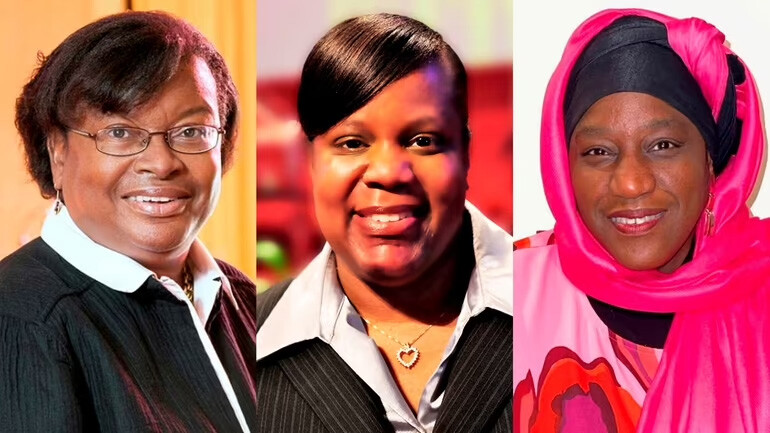
02.05.23 | Stories | by Jim Merritt
From left, the Rev. Natalie M. Fenimore of the Unitarian Universalist Congregation at Shelter Rock, the Rev. Lisa Williams, of Bethel African Methodist Episcopal Church, and Sister Zainab Bey of the Interfaith Institute of Long Island and the Islamic Center of Long Island. Credit: UU Congregation at Shelter Rock; Hy-Sync Media/James McCray; JamaaI T. Morris
Black Resistance in the Past, Present and Future,” is the theme of this February’s celebration of Black History Month, according to the Association for the Study of African American Life and History. This week’s clergy discuss notable African Americans from their faith backgrounds who were paragons of resistance in centuries past.
The Rev. Natalie M. Fenimore
Lead minister and minister of Lifespan Religious Education, Unitarian Universalist Congregation at Shelter Rock, Manhasset
There are many significant Black Unitarian Universalists, among them poet and abolitionist Frances Ellen Watkins Harper(1825-1911) and the Rev. Hope Johnson, the minister emerita at the UU Congregation of Central Nassau, in Garden City, and a national conflict resolution and social justice advocate until her death in 2020.
Another important figure is Lewis Howard Latimer (1848-1928), the son of enslaved people and an inventor who worked with Thomas Alva Edison on the invention of the light bulb and Alexander Graham Bell on the development of the telephone. Latimer was a creative and intellectually curious person who never received the same recognition or pay as non-Black inventors. Latimer insisted on pushing past imposed boundaries. He bought a large house in Flushing, Queens, when few Black people were allowed to live there and in 1908 was a founder of the Unitarian Church in Flushing.
Latimer’s poetic soul shows through in his description of incandescent lighting: “Like the light of the sun, it beautifies all things on which it shines, and is no less welcome in the palace than in the humblest home.” In his heart, his work and his faith, Latimer sought light, beauty and equality. He was true to Unitarian Universalism’s inclusive message of worth and dignity for all.
